ICAI vide its representation suggested CBDT to that changes made in Form No. 3CD be implemented from AY 2019-20 for smooth implementation and compliance. It is further suggested that the new clauses may be reconsidered and appropriately modified preferably after due consultation with the stakeholders.
THE INSTITUTE OF CHARTERED ACCOUNTANTS OF INDIA
(Set up by an Act of Parliament)
ICAUDTC/2018-19/Rep – 24
2nd August, 2018
Shri Sushil Chandra Ji,
Chairman,
Central Board of Direct Taxes,
Ministry of Finance,
Government of India,
North Block,
New Delhi-110 001.
Respected Sir,
Re: Submission of suggestions on Form No. 3CD revised vide Notification No. 33/2018, dated 20th July,2018 — Your Kind immediate intervention requested
This is in reference to the Notification No. 33/2018, dated 20th July,2018 wherein the CBDT has made revisions to Form No. 3CD.
It is pertinent to mention that due to the revisions made in Form No. 3CD vide the aforesaid notification, various new clauses/sub clauses have been inserted, major amendments have been made and some additional disclosures are to be reported. Moreover, the Direct Taxes Committee of ICAI will have to revise its ‘Guidance Note on Tax Audit under section 44AB of the Income-tax Act, 1961 with regard to changes made in Form No. 3CD and for providing guidance to members. Therefore, we fervently request your goodself to kindly implement the new forms from Assessment Year 2019-20 to ensure smooth operations & also for timely compliance.
In this regard, we refer to the Delhi High Court judgement dated 21.9.2015 in case of Avinash Gupta v. Union of India ([2015] 378 ITR 137 (Delhi)) wherein the Hon’ble Court has directed the CBDT/Government to make available the Forms for audit report and ITR by 1st April of the Assessment Year. The relevant extract of the said judgement is reproduced below:
“22…. There is sufficient time available to the Government, after the Finance Act of the financial year, to finalise the forms and if no change is intended therein, to notify of the same immediately. There appears to be no justification for delay beyond the assessment year in prescribing the said forms. Accordingly, though not granting any relief to the petitioner for the current assessment Dear, the respondents are directed to, with effect from the next assessment year, at least ensure that the forms etc. which are to be prescribed for the Audit Report and for filing the are available as on :1st April of the assessment year unless there is a valid reason therefor and which should be recorded in writing by the respondents themselves, without waiting for any representations to be made. The respondents, while doing so, to also take a decision whether owing thereto any extension of the due date is required to be prescribed and accordingly notify the public.” [Emphasis provided].
The applicability date specified in the More-mentioned notification is 20th August,2018. It will cause discrimination between two sets of assessees, those who could file Form 3CD before the cut- off date and those who will file after the cut- off date. Many audits have started and it’s not possible to complete it by 19th August,2018 and moreover, the time given to implement new forms is very less which will make it difficult for the tax payers to comply their statutory obligations in a timely and effective manner.
Further, many of the new clauses are requiring the tax auditor to sit in the chair of an assessing officer and pass value judgements. The role of the tax auditor is to assist the assessing officer in determination of income of the assessee by verifying and certifying the particulars presented by the assessee in Form No. 3CD. Therefore, the tax auditor should ideally be asked to verify the facts as presented by an assessee and certify them to be correct or incorrect. The auditor should be expected to report on objective facts; he should not be asked to sit in the chair of the assessing officer and pass value judgements on various particulars. Therefore, the revised form may accordingly modified to be in line with letter and spirit of tax audit.
| Suggestion:
It is suggested that changes made in Form No. 3CD be implemented from AY 2019-20 for smooth implementation and compliance. It is further suggested that the new clauses may be reconsidered and appropriately modified preferably after due consultation with the stakeholders. |
Further, with regard to the amendments made in Form No. 3CD vide Notification No. 33/2018, dated 20th July,2018, members have raised their apprehensions on the following points:
1. Insertion of new Clause 29A — modification required
This clause requires the auditor to certify whether there is any income in the nature referred to in section 56(2)(ix). This clause requires certain amount to be treated as income from other sources, if the amount was received for a purpose and later stands forfeited. Whether an amount is forfeited or not cannot be detected with ordinary auditing techniques. The only indication of a forfeiture can be a long-standing credit not being paid. However, the indication is available not in the year of forfeiture.
Detection of forfeiture in the very year of forfeiture is a subject matter of investigation that one who is empowered to summon other documents and enforce attendance of parties can do. This type of expectation will go far beyond the purview of tax audit and therefore may not be possible for an auditor to perform.
For example: ABC & Co. receives Rs. 1.00 acre as an advance to be appropriated towards sale of land. The other party defaults in compliance with the material terms of the agreement. Breach, such as this, of the agreement gives an option to forfeit the amount. ABC & Co. forfeits the amount but pass Passes no accounting entry indicating forfeiture. On enquiry, the other party may confirm the outstanding receivable from ABC & Co., since it might think that to admit forfeiture to the auditor may be held as his acceptance of the fact of forfeiture. Thus, unless the auditee discloses, the auditor will find it difficult to detect the fact of forfeiture. It will be after a few years that the auditor may suspect forfeiture in view of the long outstanding not being cleared, but then addition to income cannot be made in that year; it can be made only in the year of forfeiture.
| Suggestion:
It is suggested that this clause may be reconsidered for omission/modification. |
2. Insertion of new Clause 2913- modification required
This clause requires reporting on income chargeable u/s 56(2)(x). Many sub-clauses of section 56(2)(x) are a bit controversial and not amenable to clear answers. For example, receipt of TDR (Transfer of Development Rights) by an assessee for putting up extra construction for his own use. That is, TDR is acquired as a capital asset. It is a question whether TDR is land or building to which section 56(2)(x) applies. It is an admitted position that section 56(2)(x) applies to receipt of immovable property only if the immovable property consists of land or building or both. The Transfer of Property Act, 1882 defines the term ‘immovable property’ in an inclusive manner as ‘immovable property” does not include standing timber, growing crops or grass’. This definition does not help much in deciding whether TDR is an immovable or movable property. However, the definition in the General Clauses Act, 1897 provides that ‘immovable property’ includes land or benefits arising out of land, and things attached to the earth, or permanently fastened to anything attached to the earth. Thus, it can be said that TDR is an immovable property being benefit arising out of land, but it is not land to which section 56(2)(x) can apply. The proposition that the benefits arising out of land are not subject to section 56(2)(x) is supported by ACIT v Munsons Textiles [TS-6710-2012(Mum)-O] and ACIT v Shrikishan Dass [TS-6757-2013(Del)-0].
The tax auditor should ideally be asked to verify the facts as presented by an assessee and certify them to be correct or incorrect. The auditor should be expected to report on objective facts; he should not be asked to sit in the chair of the assessing officer and pass value judgements on an item of receipt.
| Suggestion: It is suggested that clause 29B be suitably modified. |
3. Insertion of Clause 30A —amendment required
Clause 30A(a) requires reporting on whether primary adjustment to transfer price, as referred to in section 92CE(1) has been made during the previous year. If the answer is in the affirmative, clause (b) requires further information on repatriation of excess money. Clause (b)(iv) particularly requires reporting on whether or not the excess money has been repatriated within the prescribed time.
It may be noted that time limit for repatriation of excess money is 90 days from the due date of filing of return. Therefore, with respect to primary adjustment made during the previous year 2017-18, the time limit for repatriation is up to 31st December, 2018. Therefore, it is not possible for the auditor to report on whether excess money has been repatriated within the prescribed time. Accordingly, clause 30A(a) should therefore require reporting on whether primary adjustment to transfer price has been made during the immediately preceding previous year (P.Y. 2016-17, in the current context), in which case the reporting requirements under dause 30A(b) can be complied with.
| Suggestion:
It is suggested that clause 30A be reconsidered and modified suitably considering timeline given in Rule 10CB of the Income-tax Rules, 1962. |
4. Insertion of Clause 30B — clarification required w.r.t. reporting under clause 30B(i)
Clause 3013(a) requires reporting on whether the assessee has incurred expenditure during the previous year by way of interest or of similar nature exceeding one crore rupees as referred to in section 94B(1). If the answer is in the affirmative, Clause 30B(b) requires furnishing of the following details:-
(i) Amount (in Rs.) of expenditure by way of interest or of similar nature incurred:
(ii) Earnings before interest, tax, depreciation and amortization (EBITDA) during the previous year (in Its.):
(iii) Amount (in Its.) of expenditure by way of interest or of similar nature as per (i) above which exceeds 30% of EBITDA as per (ii) above:
It may be noted that whereas section 946(1) speaks of disallowance of excess interest paid to non-resident associated enterprise of the borrower, section 946(2) defines excess interest as total interest paid or payable in excess of 30% of EBITDA or interest paid or payable to associated enterprises, whichever is less. On account of difference in the language used in sections 94B(1) and 94B(2), it is not dear as to whether Clause 30B(b)(i) requires reporting of interest or of similar nature incurred only in relation to non-resident associated enterprises or the total expenditure by way of interest. This may be clarified by adding the words ” in relation to debt issued by non-resident associated enterprises” at the end of the sentence in dause 30(b)(i).
Furthermore, clause 3013(iv) is not relevant for A.Y.2018-19, since section 94B has been inserted with effect from A.Y. 2018-19. However, it would be relevant for the subsequent assessment years.
| Suggestion: It is suggested that clause 3013(i) be suitably modified so as to clearly specify the reporting requirement i.e total expenditure by way of interest or of similar nature incurred or only in relation to non-resident associated enterprise. Further, clarification may be issued pertaining to non-applicability of clause 30B(iv) for AY 2018-19. |
5. Insertion of Clause 30C:
Clause 30C(a) requires reporting on whether the assessee has entered into an impermissible avoidance arrangement, as referred to in section 96. If the answer is in the affirmative, the nature of impermissible avoidance agreement and the amount of tax benefit in the previous year arising, in aggregate, to all the parties to the arrangement has to be specified.
Specific anti avoidance rules provisions under the Income-tax Act, 1961, like dubbing provisions, transfer pricing provisions, etc. have definite criteria by which the tax auditor can ascertain whether or not the assessee has complied with the provisions. However, the criteria specified under section %(1) are not definite and clear cut and may involve extensive investigation to ascertain whether an agreement falls within its scope. Without conducting a detailed investigation, it would not be possible for a tax auditor to certify the report as true and correct. It would not be legally possible for the tax auditor to enter into such tasks considering the limited scope of tax audit and further it would not be practically possible to carry out such detailed investigation in each case, since the tax audit has to be completed and report has to be filed by the prescribed due date i.e., 30th September of the assessment year. Therefore, considering that the question of determining whether an agreement is an impermissible avoidance agreement involves detailed investigation, the same should be kept out of the scope of tax audit.
An impermissible avoidance arrangement is the one that attracts general anti-avoidance measures as per the GAAR provisions. Such arrangements are purposefully designed by the entities/persons to avoid a tax.
There is a thin line of distinction between tax planning & purposeful tax evasion and would be very difficult for a tax auditor to himself decide on the complex subject and make comment whether such an arrangement is an. impermissible avoidance arrangement.
Further, it is also difficult even for an AO or CIT to determine whether an arrangement is an impermissible avoidance arrangement. It is only the Approving Panel which can declare an arrangement as impermissible avoidance arrangement.
Therefore, no responsibility should be cast on the auditor to determine whether a particular arrangement is impermissible or not. At the most the clause may be suitably modified confining to reporting of relevant objective details and information and without requiring expression of opinion by the tax auditor.
| Suggestion:
It is suggested that the clause 30C may be reconsidered and should be deleted or modified to address the concerns regarding determination of impermissible avoidance agreement. |
6. Substitution of Clause 34(b) — may be deleted
In clause 34, particulars about tax deducted or collected at source (TDS/TCS) are to be given. Under current clause 34(b), if the assessee has not furnished the statement of TDS or TCS within the prescribed time to the Tax Authorities, certain particulars are to be given. This clause 34(b) is now substituted and requires the tax auditor to state (i) TAN, (ii) Type of Form, (iii) Due date for furnishing the statement of TDS/TCS to Tax Authorities, (iv) Date of furnishing the statements of TDS/TCS and (v) Whether this statement contains information about all details/transactions which are required to be reported. If not, a list of details/transactions not reported to be given. It is pertinent to note that at present such list of unreported items is not required to be given. Preparation of such list is the additional requirement and consequent added responsibility put on the tax auditor.
It is neither feasible nor practicable to certify the desired details particularly when there are large number of transactions.
Again, there could be genuine differences of opinion with respect to liability to TDS. As the assessee separately files TDS returns, there is no justification for repetition of details via Form No. 3CD.
| Suggestion
It is suggested that the new clause 34(b) may be omitted and status quo may be maintained. |
7. Insertion of New Clause 36A – may be omitted/reconsidered
New clause 36A requires the reporting of details of dividend received by an assessee under section 2(22)(e) of the Income-tax Act, 1961. Basically, this clause involves opinion of the tax auditor as to which dividend will fall under section 2(22)(e) of the Income-tax Act,1961 as the assessee himself will not agree to it and provide the details. Therefore, it requires investigation and opinion on the part of the auditor. Hence, it needs to be modified or deleted from the tax audit form.
Whether an amount is deemed to be dividend under section 2(22)(e) of the Act or not, in many cases depends upon whether the payer company had “accumulated profits” or not. This cannot be known from the records of the recipient of the tainted amount since it is only the accounts of the payer that one can know whether he had ‘accumulated profits’. It is not known how the auditor, in the course of audit of the person who received the tainted amount, can know whether the other party had accumulated profits or not. This information is confidential and even the person in receipt of the amount cannot provide this information.
Moreover, in several cases, Courts have held that the “accumulated profits” have to be of such nature as from which distribution of dividend is possible. Apart from the distributable nature of accumulated profits (Han Prasad Jayantilal & Co. v V. S. Gupta ITO (1%6) 59 ITR 794 (SC)), Courts have also interpreted the term “accumulated profits” as meaning revenue profits, not capital profits. The relevant case laws in this regard are: Tea Estate India Pvt Ltd v CIT (1976) 103 ITR 785 (SC); First Income-tax Officer v. Short Brothers (P.) Ltd (1966) 60 ITR 83 (SC); CIT v Mangesh J. Sanzgiri (1979) 119 ITR 962 (Bom). Section 41(2) profit is not part of accumulated profit (CIT v Urm ila Ramesh (1998) 230 ITR 422 (SC)).
Therefore, it would be unfair if the auditor is asked to certify that a transaction is a case of “deemed dividend”. Such determination whether a receipt is a deemed dividend or not is more of an assessment function.
It is further submitted that many of the recipients will not be subject to tax audits. The probability of payers being subject to tax audit is far higher that the possibility of recipients being subject to tax audit. The requirement in this new clause may be redrafted and the same may be sought from the payers and the requirement should be confined to pertain to only seeking of relevant information and not seeking opinion of applicability of section 2(22)(e).
| Suggestion:
It is suggested to suitably amend clause 36A or to delete it from the tax audit form. |
8. Insertion of new clause 42 – modification required
Under this clause, if the assessee is required to file Forms 61, 61A or 6113 with appropriate authorities, the particulars relating to the same will have to be furnished. These particulars are (i) Income tax Department Reporting Entity Identification Number, (ii) Type of Form, (iii) Due date for furnishing the statement, (iv) date of furnishing the same and (v) whether the Form contains the information about all details/transactions which are required to be reported. If this is not done, a list of the details/transactions which are not reported.
The above requirement will place additional burden on the tax auditor who will have to study the requirements of the following Sections, Rules and Forms:
(a) Section 139A(5), Rules 114C and 114D and Forms 60 and 61. These deal with declarations received by the assessee in Form 60 from persons who have applied for PAN u/s 139A.
(b) Section 285BA, Rule 114E and Form 61A. This refers to obligation of a person to furnish statement of financial transactions or reportable account u/s 28513A.
(c) Section 28513A, Rule 114E and Form 61B. This also relates to the requirements of Section 285BA relating to Annual Information Reporting.
| Suggestion
It is suggested that clause 42 may be reconsidered. |
9. Insertion of new clause 43 — clarification required
Clause 43(a) requires reporting on whether the assessee or its parent entity or alternate reporting entity is liable to furnish the report as referred to in section 286(2). If the answer to the same is in the affirmative, Clause 43(b)(i) requires whether report has been furnished by the assessee or its parent entity or an alternate reporting entity.
Here again, it may be noted that under section 286(2), the time limit for furnishing report in respect of international group has been extended upto a period of 12 months from the end of the reporting accounting year with retrospective effect from 1.4.2017. Therefore, for the reporting accounting year 2017-18, the time limit for furnishing the report is 31.3.2019. Accordingly, for this reporting accounting year, the time limit for furnishing the report would not have expired on the due date of furnishing of tax audit report. Therefore, such reporting is possible only in respect of the earlier reporting accounting year 2016-17.
| Suggestion
It is suggested that clause 43 be suitably amended considering the fact that extended timeline under section 286(2) for accounting year 2017-18 will expire on 31.3.2019. i.e after the due date of furnishing tax audit report for Assessment year 2018-19. |
10. Insertion of New Clause 44 — reporting requirement may be reconsidered
New clause 44 requires break-up of total expenditure of entities registered or not registered under the GST Act. The clause requires bifurcation of expenditure into four categories in respect of entities registered under GST. The tax auditor conducting audit as per the income tax provisions is considering the auditing and taxation aspects whereas reporting on the aspects of GST law requires specialisation on that law which itself is in developing stage, is witnessing frequent changes, and therefore would require ample learning even for the practitioners in the said law. Hence, tax auditor may not be in a position to certify the same since he may have limited time as well as knowledge of the GST law. It is best that such details are certified by the GST Auditor as part of the reconciliation statement which is already provided under the CGST Act, 2017.
As GST is a new legislation, many business entities are now only settling down and have started recording the entries properly. It does not mean that they did not pay their GST properly, it means the book keeping was not done in a way to easily collate the information sought by the revised format of Form No. 3CD.
Under GST law, separate audit provisions have been incorporated where the GST reporting has to be done so there is no need to provide same details in tax audit form as it will make the form complex and more time consuming.
In cases where the audits have already been completed, but pending for few documents, say confirmations, which might lead to a situation where Form No. 3CD could be filed only after 19/8/18. In such cases, once again the books have to be revisited. It will also involve lot of time and avoidable hardships.
Every expenditure may not necessarily lead to a supply under GST. As an example, salary expense is treated as neither supply of goods nor supply of services as per Entry No. 1 of Schedule III to the CGST Act, 2017. Another instance can be of capital goods wherein only depreciation forms part of the expenditure whereas input tax credit is daimed on entire purchase. Hence it is impossible to provide break-up for “total expenditure” into GST and non-GST expenditure without doing the reconciliation.
Seeking the quantum of total payments made to the registered entities will not serve any purpose since the expenditure is recorded on accrual basis. Such information is also very difficult to obtain.
Separate field is not there for import of goods/services. Hence the quantum to be shown in the field “Expenditure relating to entities not registered under GST” will not give the accurate picture of goods/services obtained only from the unregistered suppliers since the said field will also indude imports.
In Ghai Construction v. State of Maharashtra [2009] 184 Taxman 52 (Born.), the Court explained that the audit under section 44AB was introduced following the recommendations of the Wanchoo Committee in its final report in December 1971. The Wanchoo Committee, inter alia, recommended mandatory audit at least in the big cases. The recommendation was with a view to saving considerable time for the Assessing Officer which could then be utilized by them for more important investigational aspect of a case. The Finance Minister’s speech presenting the Union Budget for 1984-85 explains the rationale as “intended to ensure that the books of account and other records are properly maintained and faithfully reflect the true income of the taxpayer.” Hence the whole idea of audit u/s 44AB of the Income-tax Act, 1961 was to ensure that the books are correctly maintained and income is rightly computed as per the provisions of the law.
With the above background, seeking the break-up of total expenditure will not have any bearing on the computation of income since the allowability of expense does not depend on whether the expenditure is incurred in respect of entities registered under GST law or otherwise. Moreover, a needless bias may get created in respect of expenditure from unregistered persons which may lead to making fishing inquiries. Hence, we submit that the Tax Audit Report is not the correct place for such details.
Further, it requires detailed examination of data, which is otherwise likely to be done by the GST auditor while undertaking GST audit leading into duplication of efforts. Pertinent to mention that the GST auditor has been granted far higher time to conduct such exercise whereas the time limit for income tax audit falls due quite early.
Since the compliances under the GST law has not fully settled down, it is likely to lead to considerable delays in collating the required information. It may not be possible for the tax auditor to obtain such data in time which may ultimately lead to demand for extension of the deadlines.
When there is a separate department dealing with GST law and assessment thereunder, the calling for particulars as prescribed hardly serves any purpose. If the intention is to identify disallowable expenses, the intention will not be served by the information, it can be hardly decided whether expenditure is allowable or disallowable.
Further, the person who incurs expenditure cannot conclusively say from the bill of supply furnished by the vendor whether or not the vendor was under the composite scheme, for the vendor would have issued bill of supply for every supply under the composite scheme or every supply of goods or services in respect of which GST is not chargeable.
It is pertinent to mention that information sought under this dause is, in another way, already part of the Annual Return under GST law which is to be filed along with the reconciliation statement as per Section 35(5) read with Section 44(2) of the CGST Act, 2017. Due date for furnishing the Annual Return is 31st December and hence there appears to be no plausible reason for seeking similar details in the tax audit report which precedes the date of filing under GST law. Said reconciliation statement under GST law is a much better tool to ensure the correctness of data than the information sought under this clause. This is because such reconciliation statement starts with figures as per audited accounts and reaches the figures as per the GST annual return. The information sought under this clause is not possible since it requires the “total expenditure” to be bifurcated into only two categories.
Every expenditure may not necessarily lead to a supply under GST law. As an example, salary expense is treated as neither supply of goods nor supply of services as per Entry No. 1 of Schedule III to the CGST Ad, 2017. Another instance can be of capital goods wherein only depredation forms part of the expenditure whereas input tax credit is claimed on entire purchase. Hence it would be very difficult to provide break-up for “total expenditure” into GST and non-GST expenditure without doing the reconciliation.
It may also be appreciated that during FY 2017-18, first three months were under the old regime and nine months thereafter are under the GST regime. Hence it may pose additional difficulties to break-down the “total expenditure” into only two categories as sought under this clause.
This clause increases the burden of verification due to the large, voluminous data in the cases of large taxpayers. The cost of verification will outweigh the benefits, if any, derived from the information. This clause may be considered for omission.
| Suggestion:
It is suggested that the required reporting under clause 44 should ideally be covered under the GST audit since the details in much granular form will be captured in the GST returns. Through an interface between Income tax department systems & GST networks, the requisite data could be made available to the income-tax authorities. Hence, it is suggested that clause 44 may be suitably omitted or modified. Alternatively, the impugned amendments may be deferred to next year, so that the assesses can incorporate proper controls in their accounting systems itself so as to enable extracting proper data. |
We hope that our suggestions will be favourably considered. We also request you to involve us in deliberations in this regard.
Yours faithfully,
CA. Tarun Jantnadas Ghia
Chairman, Direct Taxes Committee
The Institute of Chartered Accountants of India
Download Full Text in PDF Format
Some of the relevant Posts on Revised Form 3CD
Inapt amendments in Tax Audit Report for AY 2018-19
Analysis of Amendments In Form 3CD Pertaining To GST
Complete Analysis on Tax Audit for Financial Year 17-18 i.e. AY 18-19
Revised Form 3CD in Excel fromat for A.Y. 2018-19
Analysis of amendments in Form 3CD Tax Audit Report
Revised Form No. 3CD Tax Audit Report
Key Amendments to Form no. 3CD effective from 20 August 2018
Tax Audit Report Form 3CD- Amendments & Detailed Analysis
Tax Audit Report Form 3CD- Recent Changes- Exhaustive Analysis





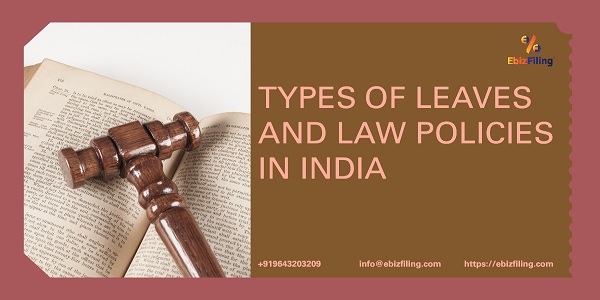

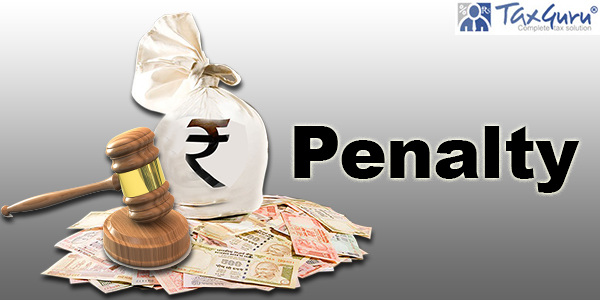



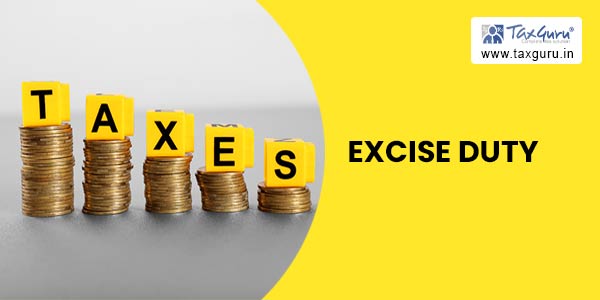



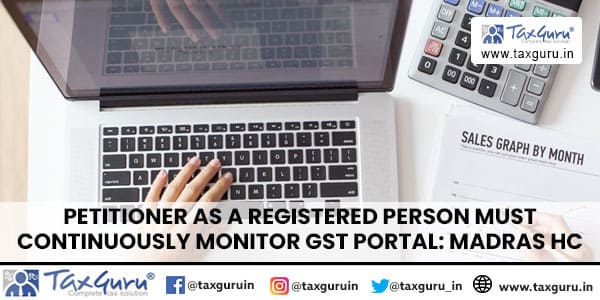
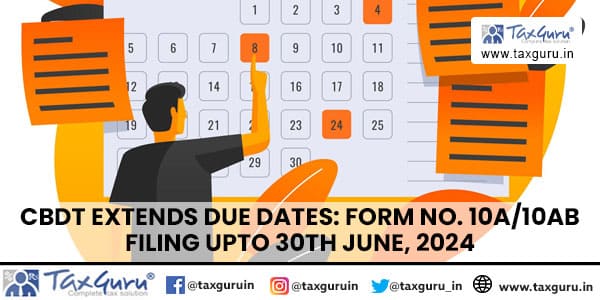
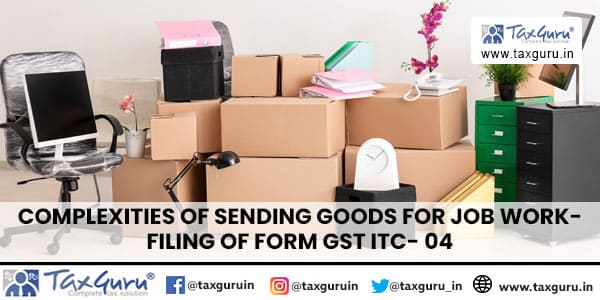

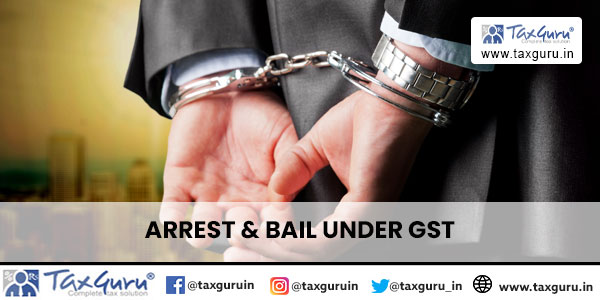
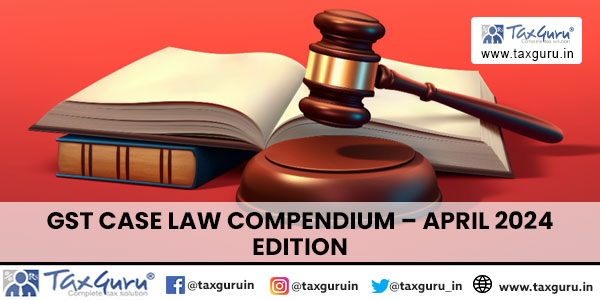
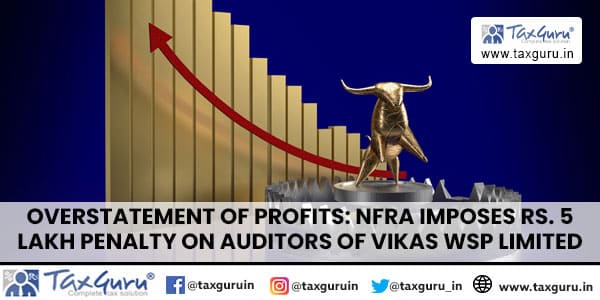
the rpresentation is well prepared. CBDT should consider the proposals/suggestions with an open mind and see that the contradictions, constrains of time, overlapping of filing informations as well as the possibilities of obtaining thereof are given due weight.
the representation is very well prepared. CBDT should, in all reasonabilities,consider the proposals keeping in view the contradictions of various provisions as well as the duplicacies and practicabilities. Also the difficulties of CA fraternity be kept in mind along with the time constraint in conducting the tax audit and reporting thereof.
Amendments be postponed as requested by ICAI and also some extension is required
A very good initiative; let us wait and see whether the CBDT responds positively!
The People at the helm of affairs in CBDT should understand the ordeals of CAs in adhering to the frequent changes made in the procedures. Above all before bringing such changes they should consult all the stake holders as to whether the changes are necessary and if it is to be changed what is the necessity to change them in the mid-way?
INSTANT (to provoke more thoughts)(:
An independent study and impartial appraisal of the suggestions made, also of the stated grounds to justify why the FORM of TAR requires modifications are needed; and that should be done, with primary focus on that the Form eventually modified is expected to serve the real purpose of , and the main objective behind the legal formality, requiring a CA to render such a mandated Report , with all sincerity and seriousness.
Anyone, fully conscious of the expectation that the TAR is aimed at /intended to meet the objective of not only the Revenue but also protect and safeguard the lawful vested interests of the “PUBLIC”, or any section of it,- with a different stroke of thoughts but in the same vein?!
KEY Note: May be worth, if so care and mind, looking through and bearing in mind, the related aspects earlier shared in Posts on this very same Topic herein.
amendments in Form 3 CD to be postponed and may be made applicable from AY 2019/2020
GOVT has started treating tax audit report a tool to get the information which was not envisaged at the time of its introduction. Govt expects that CA community should work like machines as compared to which clients are not ready to compensate for their efforts. Can Govt find a way for compensation to CA’S on this account and give appropriate time to conduct the required job of reporting..
The DTC of ICAI has once again is coming to the rescue of member fraternity and pointing fingers to CBDT which tries lay down lot of things in the Tax Audit Report. The CBDT is putting lot of pressure on professionals to sit in the chair as Super Officer and to pass valued judgements which is not their domain. The Income-tax officer has to take views and pass judgement and pass orders. It is not CA’s responsibility. It is highly unfair on the part of CBDT to expect CA to do this onerous task. Hopefully CBDT either defers this or extends the due date to 31st March 2019.
Timely alert by DTC of ICAI & if considered favourably ,will provide relief both to the Tax Payer & Tax Auditor.
The ICAI should simultaneously move to Honourable Delhi High Court as eh amendments brought to Form No. 3CD are clearly in violation of the order of the Court and it is a clear case of contempt of the Honourable Delhi High Court. The bureaucrats always tend to be high handed and show their supremacy. Return preparation utilities are released late and then they keep on amending schema at their sweet will. Genuine difficulties are not being realised.
Timely alert by DTC on forth coming overlapping data reporting for dividend TDS and diluting the audit focus compressing all behind time schedules could not be complied.Cannons of taxation and principles of software development life cycle and common users perception and agony are taken for a ride.Availability and accessability of portal with all ITR forms schema intact is not ensured for fixing and extending due dates. Thank DTC and members for intervention and efforts in the right direction for member practioners.